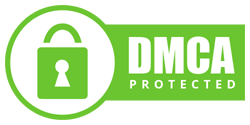WHAT DO SOLAR CHARGE CONTROLLERS DO?
Before we answer this we first need to ask...
What is a Solar Charge Controller?
A charge controller or charge regulator is basically a voltage and/or current regulator to keep batteries from overcharging. It regulates the voltage and current coming from the solar panels going to the battery. Most "12 volt" panels put out about 16 to 20 volts, so if there is no regulation the batteries will be damaged from overcharging. Most batteries need around 14 to 14.5 volts to get fully charged.
Do I always need a charge controller?
Not always, but usually. Generally, there is no need for a charge controller with the small maintenance, or trickle charge panels, such as the 1 to 5-watt panels. A rough rule is that if the panel puts out about 2 watts or less for each 50 battery amp-hours, then you don't need one.
For example, a standard flooded golf car battery is around 210 amp-hours. So to keep up a series pair of them (12 volts) just for maintenance or storage, you would want a panel that is around 4.2 watts. The popular 5-watt panels are close enough, and will not need a controller. If you are maintaining AGM deep cycle batteries, such as the Concorde Sun Xtender then you can use a smaller 2 to 2-watt panel.
There are many variables that affect how much power is generated by your panels at any given time, including the level of sunlight, temperature, and your battery’s state of charge. Charge controllers, which sit between the solar panels and battery bank, perform the essential role of monitoring all these factors to ensure the optimal amount of energy from your panels gets fed into your battery bank. This ensures your system runs efficiently and safely. Solar charge controllers also prevent battery drainage by shutting down the system if stored power falls below 50 percent capacity. This helps preserve the life and health of the batteries.
WHAT ARE THE DIFFERENT TYPES OF SOLAR CHARGE CONTROLLERS?
There are two types of charge controllers to consider: Pulse Width Modulation (PWM) controllers and Maximum Power Point Tracking (MPPT) controllers. PWM charge controllers are an older technology and are cheaper, but less efficient than MPPT charge controllers. Both are widely used, have similar lifespans, and preserve the life of your batteries.
The main benefit of MPPT controllers is that they actively monitor and adjust their input to regulate a solar system’s current, and they will step down the voltage and boost the current. For example, if it becomes cloudy, your MPPT charge controller will automatically decrease the amount of current drawn in order to maintain a desirable voltage at the output of the panel. When it becomes sunny again, the MPPT controller will allow more current in again. With these functionalities at work, you can expect efficiency ratings of 90% or higher.
PWM charge controllers are the cheapest charge controller option, best for warm sunny weather, and performs best when the battery is near the full state of charge. PWM controllers regulate the flow of energy to the battery by reducing the current gradually, called "pulse width modulation.” When batteries are full, a PWM charge controller will supply a tiny amount of power to keep batteries full.
WHAT SIZE SOLAR CHARGE CONTROLLER DO I NEED?
Charge controllers are sized based on the solar array's current and the solar system’s voltage. You typically want to make sure you have a charge controller that is large enough to handle the amount of power and current produced by your panels. If your solar system's volts were 12 and your amps were 14, you would need a charge controller that had at least 14 amps. However, due to environmental factors, you need to factor in an additional 25%. This brings the minimum amps that this charger controller must have to 17.5 amps. In this example, you would need a 12 volt, 20 amp charge controllers. We recommend using the Renogy solar calculator to determine what size solar installation you need to meet your energy needs.
Q/A
1. Should I wire the panels in series or parallel using MPPT charge controller?
The panels can be wired either in series or parallel or combination of series/parallel using MPPT charge controller.
2. Can I connect an inverter to the load terminal?
The load terminal is only compatible to run one small 12 V DC load with low amp consumption.
All the other devices and appliance with surge and high amp draw should be connected directly to the battery.
3. Can I change/adjust the charging parameters on MPPT charge controllers?
MPPT charge controllers offer a USER setting, this USER setting will allow you to program your own charging parameters, such as Boost voltage and Float voltage.
4. Can I cover or mount the charge controller in an enclosed box?
The Charge controller will convert the excess voltage into heat and dissipate into air.
Therefore, it should be mounted in a well-ventilated area with 9-Inch clearance around the charge controller.
PWM CHARGE CONTROLLERS.
Q/A
1. CAN I WIRE TWO CHARGE CONTROLLERS IN PARALLEL TO ONE BATTERY BANK
No, we do not recommend that. The PWM charge controller is not designed to communicate to each other. Hence, batteries will only be getting charge from one controller.
2. CAN I CHANGE/ADJUST THE CHARGING PARAMETERS ON PWM CHARGE CONTROLLERS?
Unfortunately, PWM charge controllers does not have User/programmable setting.
3. CAN I COVER OR MOUNT THE CHARGE CONTROLLER IN AN ENCLOSED BOX?
The Charge controller will convert the excess voltage into heat and dissipate into air. Therefore, it should be mounted in a well-ventilated area with 9-Inch clearance around the charge controller.
4. CAN I USE THIS CONTROLLER WITH DC ALTERNATOR OR WIND TURBINE?
No, the charge controller is only compatible to accept input from solar panels.
- To purchase high quality and efficient SOLAR CHARGE CONTROLLERSfrom Jumia at the best price in Kenya



/product/67/130953/1.jpg?9188)
/product/67/130953/2.jpg?9188)
/product/67/130953/3.jpg?9188)
/product/67/130953/4.jpg?9188)
/product/67/130953/5.jpg?9188)
/product/67/130953/6.jpg?9188)
/product/67/130953/7.jpg?9188)
/product/67/130953/8.jpg?9188)

/product/07/461033/1.jpg?9370)
/product/07/461033/2.jpg?9370)
/product/07/461033/3.jpg?9370)
/product/07/461033/4.jpg?9370)
/product/07/461033/5.jpg?9370)
/product/07/461033/6.jpg?9370)
/product/07/461033/7.jpg?9370)
/product/07/461033/8.jpg?9370)




0 Comments